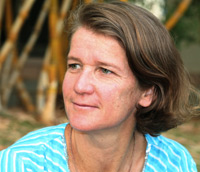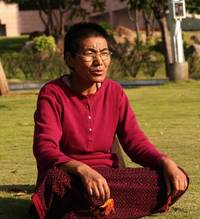Abstract: How Ordination Relates to Status in the Buddhist Himalaya
by Dr. Kim Gutschow and Skalzang Lhamo
Let us consider the complex set of factors, including ordination, that have and continue to constrain the position of female monastics in the rural Himalayan regions of Zangskar and Ladakh.
We begin with a brief overview of the evidence for fully ordained nuns in Buddhist Kashmir and western Tibet up to and beyond the 10th and 11th century CE. The same factors that presumably led to the decline and eventual disappearance of fully ordained nuns in this region continue to play salient roles today. Then as now, economics and environment played a crucial role in the maintenance of a monastic tradition and the requisite ordination of nuns. The history of nuns and monks has been profoundly shaped by these and other factors for at least a millennium.
Today more than ever, rapid changes in education and globalization are rapidly breaking down existing dualities---such as rural/urban, east/west, and monastic/lay, and male/female---that have traditionally constrained opportunities available to nuns in the Tibetan tradition. An exciting new set of institutions has been created from the ground up in Ladakh and Zangskar to promote the status and welfare of nuns in the region. Institutions like the Ladakh Nuns Association and the more recently formed Zangskar Nuns Association are trying to rethink the role of nuns as well as religion in their local society. What can the recent advances and ongoing difficulties faced by these institutions tell us about current prospect and ongoing position of nuns in the Indian Himalayas? It is only when we understand the practical challenges of reinventing the role of Buddhist nun that we see the way forward out of historic limitations.
Kim Gutschow is Visiting Assistant Professor at Williams College in the United States, while Skalzang Lhamo is a nun from Kachod Grubling Nunnery in Karsha, Zangskar as well as the secretary of the Zangskar Nuns’ Association.
Buddhismus (Foundation for Buddhist Studies) and
takes place in co-operation with the
Asia-Africa-Institute of the University of Hamburg.
See our list of sponsors.


